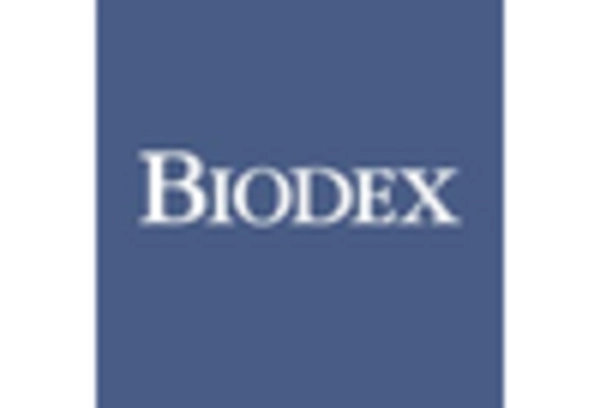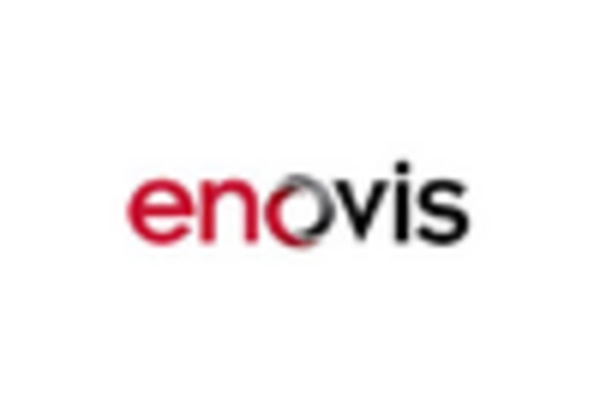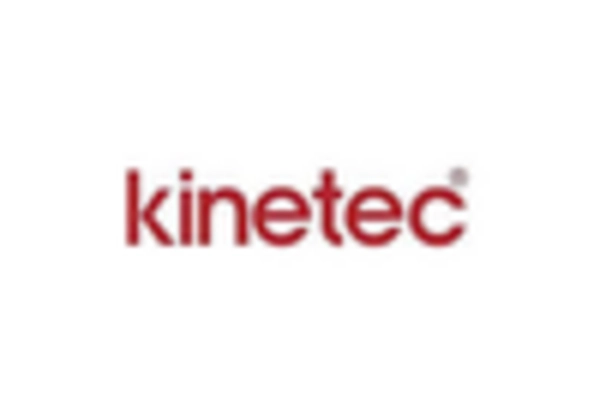Aging Population
The aging population is a crucial driver of the Physical Therapy Equipment Market. As individuals age, they often experience a decline in mobility and an increase in chronic conditions, necessitating physical therapy interventions. According to demographic data, the proportion of individuals aged 65 and older is projected to rise significantly, leading to a higher demand for rehabilitation services. This demographic shift is likely to result in an increased need for specialized physical therapy equipment designed to cater to the unique needs of older adults. Consequently, manufacturers are focusing on developing innovative solutions that enhance mobility and improve the quality of life for this demographic, thereby propelling growth in the Physical Therapy Equipment Market.
Technological Innovations
Technological innovations play a vital role in shaping the Physical Therapy Equipment Market. The integration of advanced technologies such as robotics, telehealth, and wearable devices is transforming the landscape of physical therapy. These innovations enhance the effectiveness of rehabilitation programs and improve patient engagement. For instance, robotic-assisted therapy devices are gaining traction, offering precise and consistent support during rehabilitation exercises. Furthermore, telehealth solutions enable remote monitoring and consultations, expanding access to physical therapy services. As these technologies continue to evolve, they are likely to drive the demand for new and improved physical therapy equipment, thereby fostering growth within the Physical Therapy Equipment Market.
Growth of Home Healthcare Services
The growth of home healthcare services is emerging as a significant driver of the Physical Therapy Equipment Market. With an increasing number of patients opting for home-based rehabilitation, there is a rising demand for portable and user-friendly physical therapy equipment. This trend is supported by data indicating that home healthcare services are projected to expand, driven by factors such as convenience and cost-effectiveness. As patients seek to recover in the comfort of their homes, manufacturers are focusing on creating equipment that is not only effective but also easy to use in a home setting. This shift towards home healthcare is likely to propel the Physical Therapy Equipment Market, as it aligns with the evolving preferences of patients and healthcare providers.
Rising Incidence of Chronic Diseases
The rising incidence of chronic diseases is another pivotal driver influencing the Physical Therapy Equipment Market. Conditions such as obesity, diabetes, and cardiovascular diseases are becoming increasingly prevalent, leading to a greater need for rehabilitation services. Data indicates that chronic diseases account for a substantial portion of healthcare expenditures, prompting healthcare providers to invest in effective physical therapy solutions. This trend is likely to drive demand for advanced physical therapy equipment that can facilitate recovery and improve patient outcomes. As healthcare systems prioritize preventive care and rehabilitation, the Physical Therapy Equipment Market is expected to witness significant growth, with an emphasis on equipment that supports long-term health management.
Increased Awareness of Rehabilitation Benefits
Increased awareness of the benefits of rehabilitation is significantly influencing the Physical Therapy Equipment Market. As more individuals recognize the importance of physical therapy in recovery and injury prevention, the demand for related services and equipment is expected to rise. Educational campaigns and advocacy efforts are contributing to a greater understanding of how physical therapy can enhance mobility and overall health. This heightened awareness is likely to lead to increased referrals to physical therapy services, subsequently driving the need for a diverse range of physical therapy equipment. Consequently, manufacturers are responding by developing innovative products that cater to the evolving needs of patients and healthcare providers within the Physical Therapy Equipment Market.




















Leave a Comment